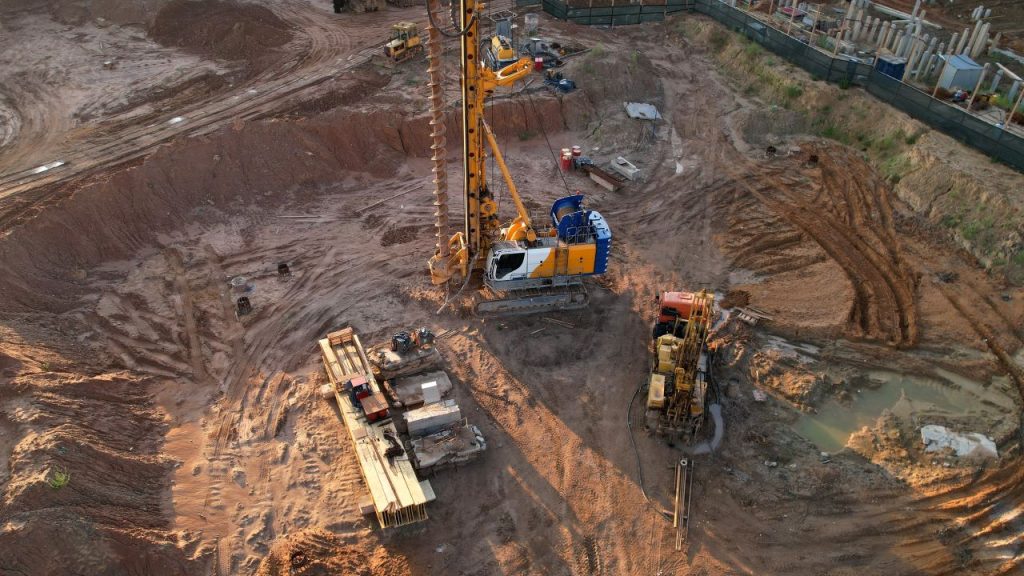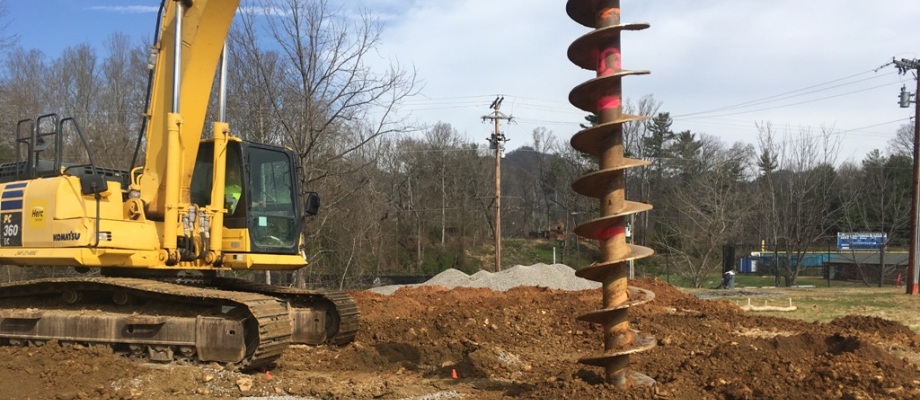A Detailed Summary of the Trick Obligations of Geotechnical Designers in Website Characterization and Ground Improvement Techniques for Engineering Solutions
Geotechnical engineers are integral to the effective implementation of design tasks, charged with the critical duties of site characterization and the application of ground enhancement methods. Their job entails a complete evaluation of subsurface conditions, employing numerous screening approaches to identify soil and rock residential properties.
Duty of Geotechnical Engineers
Geotechnical designers play a critical role in the design and construction of framework by evaluating the actions of soil and rock underneath the surface area - civil consulting engineers. Their duties include assessing subsurface problems to notify design decisions that make certain architectural stability and safety. By performing in-depth evaluations of soil buildings, including shear leaks in the structure, toughness, and compressibility, geotechnical designers offer crucial information that affects the selection of ideal building products and methods
Along with analyzing dirt auto mechanics, geotechnical engineers are tasked with determining possible threats such as landslides, sinkholes, and ground negotiations. Their expertise assists mitigate threats connected with these geotechnical sensations, thereby safeguarding both the environment and public security. They also work together very closely with other design disciplines, guaranteeing that geotechnical factors to consider are integrated into overall task design.
Additionally, geotechnical engineers participate in the analysis of existing structures, supplying recommendations for retrofitting and fixings when required. Their comprehensive understanding of soil-structure communication is essential for the development of sustainable infrastructure remedies. In general, the function of geotechnical engineers is indispensable to the successful realization of construction tasks, ensuring they are secure, resilient, and certified with regulatory criteria.

Website Characterization Procedures
Efficient site characterization processes are important for recognizing the subsurface problems that affect job design and execution. Geotechnical designers use a systematic strategy to collect, examine, and translate data relating to soil, groundwater, and rock characteristics. This procedure starts with a thorough evaluation of existing literature and historic website data, supplying insights into previous site problems and potential challenges.

Information evaluation adheres to fieldwork, where designers make use of geostatistical methods to analyze findings and create geological models. Via thorough website characterization, geotechnical engineers lay the groundwork for successful job execution, lessening unanticipated problems and optimizing resource allotment.
Soil and Rock Testing Methods
While recognizing subsurface problems is essential, the selection of appropriate soil and rock testing approaches is just as important for precise evaluation and layout. Geotechnical engineers utilize a selection of testing techniques to evaluate the mechanical and physical homes of soil and rock products.
Laboratory tests, such as Atterberg limits, grain dimension evaluation, and unconfined compressive toughness examinations, provide essential data on soil actions under various wetness conditions and filling situations. These examinations assist figure out soil classification and anticipate settlement or shear stamina features critical for structure style.
In-situ testing methods, including Standard Penetration Tests (SPT), Cone Penetration Examinations (CPT), and stress meter tests, permit designers to collect information her response directly from the ground. These approaches offer important understandings into the dirt's density, consistency, and stratification without the demand for considerable tasting.
Rock screening usually includes core tasting and lab evaluation to examine residential properties like uniaxial compressive toughness and rock quality classification (RQD) With each other, Extra resources these dirt and rock screening methods make it possible for geotechnical designers to make educated decisions concerning site-specific challenges, guaranteeing the safety and security and stability of design solutions.
Ground Enhancement Methods
Ground renovation techniques are necessary for improving the design residential properties of soil, therefore enhancing its load-bearing capability and decreasing settlement. These methods are important in resolving difficulties presented by troublesome or weak dirts, which can considerably impact the security and sturdiness of frameworks.
Various ground improvement techniques are utilized, consisting of compaction, grouting, and dirt stablizing. Grouting, on the other hand, involves injecting a liquid material into the ground to fill up voids and boost soil communication.
Dirt stablizing incorporates a range of methods, from chemical ingredients to mechanical treatments, focused on enhancing the soil's resistance to erosion and deformation. Methods such as lime stabilization or concrete blending change the buildings of find more information the soil at a bit degree, boosting its overall performance.
Importance of Geotechnical Assessments
Geotechnical evaluations play a critical duty in the planning and design of design jobs, as they give crucial info concerning the subsurface problems. Understanding dirt buildings, rock developments, groundwater degrees, and potential geohazards is important for making certain the stability and safety and security of frameworks. These evaluations make it possible for engineers to make educated choices pertaining to website choice, design parameters, and construction techniques.
The relevance of geotechnical assessments expands beyond initial task phases; they are crucial in risk administration and cost performance. By determining prospective concerns early, such as soil settlement, slope instability, or too much groundwater, designers can create suitable reduction techniques, lowering the likelihood of structural failures and costly hold-ups. Moreover, these evaluations support compliance with governing requirements and improve the sustainability of design practices.

Verdict
To conclude, geotechnical engineers are important to guaranteeing the security and stability of engineering jobs through comprehensive site characterization and ground improvement techniques. geotechnical eng. Their methodical strategy to evaluating subsurface conditions, combined with their suggestions for reliable ground alteration, significantly boosts soil residential properties and load-bearing capacity. The experience of geotechnical engineers not only promotes informed job planning however likewise makes sure conformity with laws and fosters reliable communication among stakeholders, eventually adding to successful engineering end results
Geotechnical engineers play a critical role in the layout and building and construction of facilities by evaluating the habits of soil and rock below the surface. By carrying out thorough analyses of soil properties, including shear leaks in the structure, compressibility, and stamina, geotechnical designers supply essential data that affects the selection of ideal building and construction products and methods.
In addition to assessing soil mechanics, geotechnical engineers are entrusted with identifying potential threats such as landslides, sinkholes, and ground settlements. Geotechnical engineers utilize a systematic strategy to gather, evaluate, and analyze information regarding groundwater, rock, and soil qualities. By recognizing prospective problems early, such as soil settlement, slope instability, or too much groundwater, designers can devise ideal mitigation strategies, reducing the probability of structural failings and expensive hold-ups.